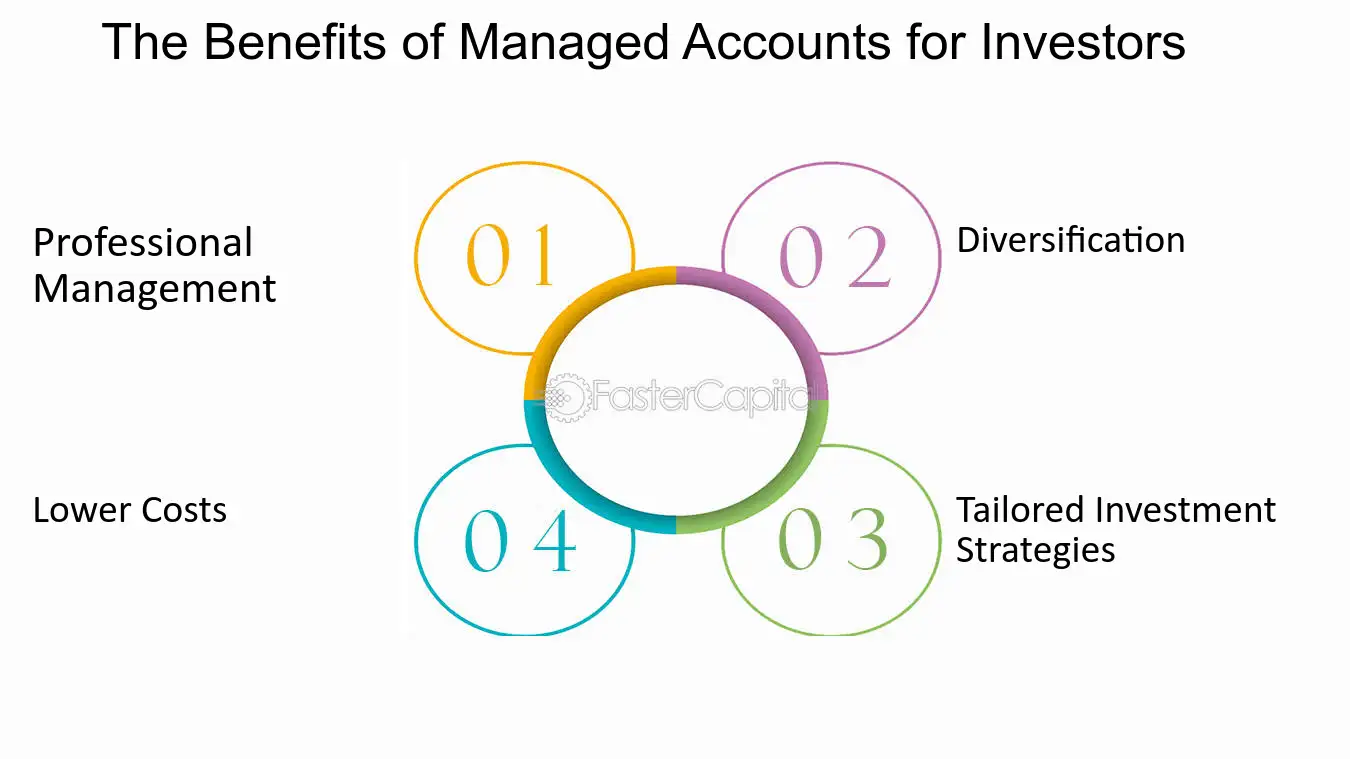Unlocking Separately Managed Accounts: Benefits, Drawbacks, and Insights
Investment management has evolved significantly over the years, providing investors with a plethora of options to optimize their portfolios. One such option that has gained traction among affluent individuals and institutional investors is the separately managed account (SMA). A separately managed account allows investors to have their portfolios managed by a financial advisor according to their specific investment strategy and preferences. This article explores the benefits, drawbacks, and key insights about SMAs to help you determine if this investment vehicle is right for you.

As more investors seek personalized strategies that align with their financial goals and risk tolerance, understanding the intricacies of SMAs becomes increasingly important. This article will delve into various aspects of separately managed accounts, offering an in-depth analysis to empower you with the knowledge necessary for informed decision-making.
What are Separately Managed Accounts?
Separately managed accounts (SMAs) are investment vehicles that allow investors to maintain direct ownership of individual securities while benefiting from professional management. Unlike mutual funds or exchange-traded funds (ETFs), where investors pool their money to buy shares of the fund, SMAs provide a unique structure that offers greater customization and transparency.
In an SMA, a financial advisor manages the investor’s assets according to specified parameters, which may include risk tolerance, investment objectives, and time horizon. This tailored approach enables investors to align their portfolios closely with their personal financial goals, making SMAs an appealing option for those seeking a more hands-on investment strategy.
Benefits of Separately Managed Accounts
Separately managed accounts come with a range of advantages that can make them an attractive option for investors. Here are some key benefits:
- Portfolio Customization: SMAs allow investors to create a personalized investment strategy that reflects their unique preferences and risk profiles.
- Tax Efficiency: Investors in SMAs have more control over their tax liabilities, as they can manage capital gains and losses more effectively than with pooled investment vehicles.
- Transparency: Investors can see exactly which securities are held in their account, providing a level of transparency often lacking in mutual funds.
- Professional Management: SMAs are managed by financial advisors or investment professionals, offering investors the benefit of expert guidance and research.
- Direct Ownership: Investors hold the underlying securities directly, which can enhance their sense of ownership and control over their investments.
Portfolio Customization
One of the standout features of SMAs is the ability to customize investment portfolios to meet specific criteria. Investors can dictate the types of assets they wish to include or exclude, aligning their investment strategy with personal values such as ethical investing, sustainability, or sector preferences.
Tax Efficiency
Tax efficiency is a critical aspect of investment management that often gets overlooked. SMAs allow investors to control when they realize gains or losses, making it easier to manage tax implications. This is particularly advantageous in volatile market conditions where tax liabilities can significantly impact overall returns.
Transparency and Accountability
With SMAs, investors have a clear view of their holdings, enabling them to monitor performance and understand the underlying risks. This level of transparency fosters a sense of accountability between the investor and the financial advisor, encouraging better communication and alignment of interests.
Drawbacks of Separately Managed Accounts
While SMAs offer numerous benefits, they are not without their drawbacks. Understanding these limitations is essential for making an informed decision. Here are some potential downsides:
- Higher Fees: SMAs typically come with higher management fees compared to traditional mutual funds or ETFs, which can erode investment returns over time.
- Minimum Investment Requirements: Many SMAs have substantial minimum investment thresholds, making them less accessible for average investors.
- Less Diversification: Depending on the investor’s choices, SMAs may lead to less diversification compared to pooled investment vehicles.
- Complexity: The customization options can lead to increased complexity in managing the account and understanding the investment strategy.
- Dependence on Advisor’s Skill: The success of an SMA is heavily reliant on the financial advisor’s expertise and decision-making abilities.
Higher Fees
The management fees associated with SMAs can be significantly higher than those for traditional investment options. This is a crucial consideration for investors, as higher fees can diminish overall returns, particularly over the long term.
Minimum Investment Requirements
Many financial institutions impose high minimum investment amounts for SMAs, often ranging from $100,000 to over $1 million. This restricts access for many individual investors who may not have sufficient capital to meet these requirements.
Insights on Selecting a Financial Advisor for Your SMA
Choosing the right financial advisor is critical when investing in a separately managed account. Here are some insights to consider:
- Experience and Expertise: Look for an advisor with a proven track record in managing SMAs and a deep understanding of investment strategies that align with your goals.
- Investment Philosophy: Ensure that the advisor’s investment philosophy aligns with your own. This alignment is crucial for a successful partnership.
- Communication Style: A good advisor should maintain open lines of communication, providing regular updates and being receptive to your concerns.
- Fee Structure: Understand the advisor’s fee structure, including any additional costs associated with managing the SMA.
- References and Reviews: Seek references and reviews from other clients to gauge the advisor’s reliability and effectiveness.
Frequently Asked Questions (FAQ)
1. What is the primary purpose of a separately managed account?
The primary purpose of a separately managed account is to provide investors with personalized investment management that aligns with their specific financial goals, risk tolerance, and investment preferences.
2. Are separately managed accounts suitable for all investors?
While SMAs can be beneficial for high-net-worth individuals and institutional investors, they may not be ideal for all investors due to high minimum investment requirements and associated fees.
3. How do separately managed accounts differ from mutual funds?
Unlike mutual funds, where investors pool their money to buy shares, SMAs provide direct ownership of individual securities, allowing for greater customization and tax efficiency.
4. What are the tax implications of investing in an SMA?
Investors in SMAs can manage capital gains and losses more effectively, which can lead to improved tax efficiency compared to pooled investment vehicles.
5. How can I evaluate the performance of my SMA?
Performance evaluation can be done by comparing the SMA’s returns to relevant benchmarks, reviewing the account’s holdings, and assessing the advisor’s investment strategy and decision-making process.
Conclusion
Separately managed accounts offer a unique blend of customization, professional management, and transparency, making them an appealing choice for investors seeking tailored investment strategies. However, potential drawbacks such as higher fees and minimum investment requirements must be carefully considered. By selecting a knowledgeable financial advisor and understanding the intricacies of SMAs, investors can unlock the full potential of this investment vehicle. Ultimately, the decision to pursue a separately managed account should align with your overall financial goals, risk tolerance, and personal preferences.
📰 Original Source
Este artigo foi baseado em informações de: https://www.nerdwallet.com/article/investing/separately-managed-accounts-sma


